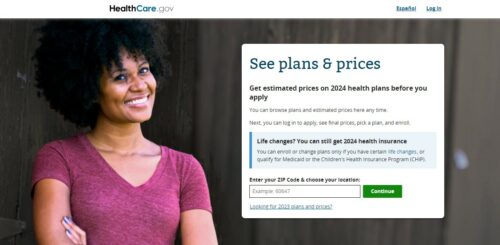“This is a big f—— deal.”
–Joe Biden
One of the biggest expenses that people who want to retire prior to age 65, when they become eligible for Medicare, is health. With healthcare inflation far exceeding inflation for the rest of the economy, and with most employers providing at least some health insurance for their employees, the cost of health insurance is one of the biggest expense surprises that early retirees have to account for.
With the enactment of the Patient Protection and Affordable Care Act (PPACA, or ACA), one of the biggest issues in receiving health care coverage for early retirees is off the table – insurability. Since previous conditions are not one of the criteria for coverage or pricing, there is no longer a need for early retirees to maintain coverage just in case they develop a condition that would make them uninsurable or put them into a high risk category in the future.
Now, early retirees have three options for healthcare coverage:
- Self-insure. If you get sick, go to the doctor and pay cash. Need a prescription? Go to the doctor and pay cash. Since insurers can no longer deny coverage, if you develop a condition that will require long-term care or will be expensive to treat, you can apply for coverage at that point, although you may have to wait up to 90 days before you are covered. There is a cost, besides what you’d pay out of pocket, for choosing this route. The ACA implemented an excise tax that is the greater of 1% of your modified adjusted gross income (MAGI) or $95 in 2014, rising to $695 and 2.5% in 2016. For a family making $75,000, that’s $750, rising to $1,875. If you’re healthy and rarely need medical or health care, this may be a viable option, assuming you have the assets to pay for catastrophic care. I can imagine a nightmare scenario where you’re in a single-car accident and in an ICU for weeks or months, unable to move, much less apply for health insurance.
- Get private health insurance. Just as people have done in the past, you could go to a private insurer and get regular health insurance. Although I am neither an actuary nor an insurance expert, I would not be surprised to see, relative to the healthcare exchanges provided under Obamacare, rates drop slightly, as the high risk purchasers will move to the public exchanges, lowering the risk profiles of those seeking private insurance. Don’t quote me on that one, please.
- Go onto the public exchange and get health insurance. With the opening up of the exchanges on October 1, 2013, early retirees will have another option for receiving coverage.
I was curious how the three would play out for a couple in Fort Worth, Texas who decided to retire when the healthcare exchanges opened.
Which one was the cheapest Obamacare plan?

For this exercise, I’m going to assume that the couple makes $75,000 in MAGI, the male is 40, and the female is 39. Neither smokes.
I’m going to evaluate the Obamacare Bronze plan – the one that I think is the best for nearly every situation – in Fort Worth, Texas versus a high deductible healthcare plan (HDHP). The reason I chose an HDHP is that, if you’re retiring early, you should have sufficient liquid assets to cover an annual deductible. If not, you’re retiring too early and should postpone your retirement a little.
The first calculation I checked was the Obamacare subsidy calculator from the Kaiser Family Foundation. This calculator tells you whether or not you get a health insurance tax credit based on your income. In this case, the family would not receive a tax credit. We’ll explore more on that topic in a bit.
Then, I went to eHealthInsurance to get a quote for a HDHP plan – subject, of course, to underwriting, since it is private health insurance. According to eHealthInsurance, this couple could get a BlueEdge Individual HSA Plan VIII for $247.00 per month. That would provide them with PPO catastrophic coverage, a $10,000 deductible, and 0% coinsurance once the deductible was met.
Finally, I looked at the ACA rates for the minimum Bronze plan rate according to the Department of Health and Human Services. The cost for a 40 year old is $186.23 per month, and the cost for a 39 year old is $183.90 per month, totaling a monthly cost of $370.13. The maximum out of pocket cost – the deductible – is $12,700.
In this case, the private insurance option was the cheapest. However, if the couple wanted to roll the dice, they could pay $750 in an excise tax and have no health coverage, compared to a minimum cost of $2,964 with private insurance. The downside is that the couple could be on the hook for unlimited medical bills until they could get underwritten and approved for health insurance, whereas the maximum annual out of pocket expense with the private insurance would be $12,964. The question is whether or no saving $2,214 a year is worth it, and if you’re retiring early, you shouldn’t be on such a thin margin that $2,214 a year makes a difference in whether or not you could retire. It’s not a path I recommend.
The calculation becomes more interesting when the early retiree family earns below the 400% federal poverty level, which for a family of two, is $62,040. Again, using the Kaiser calculator, if that family earned $50,000, then they could receive a tax credit of $1,745. This makes the Obamacare Bronze option $267.44 per year cheaper.
However, the deductible is $2,700 per year higher. A family that goes above the $10,000 deductible threshold could quickly blow through the benefit; however, if the family’s out-of-pocket expenses – not including the premiums – are below $10,000 annually, then the Obamacare option is viable.
Since the median annual household income in Fort Worth was, in 2009, $47,634, it’s not a stretch to believe that there would be cases where this family actually would have an early retirement income that would qualify them for Obamacare threshold subsidies and make it a better economic decision to use the public healthcare exchange than to go with a private insurer.
Before you disregard the public option as viable as you transition into early retirement, make sure that you compare prices, both overall out-of-pocket totals and monthly premiums after factoring in tax subsidies, before deciding what healthcare coverage you will take.
Author Profile
- John Davis is a nationally recognized expert on credit reporting, credit scoring, and identity theft. He has written four books about his expertise in the field and has been featured extensively in numerous media outlets such as The Wall Street Journal, The Washington Post, CNN, CBS News, CNBC, Fox Business, and many more. With over 20 years of experience helping consumers understand their credit and identity protection rights, John is passionate about empowering people to take control of their finances. He works with financial institutions to develop consumer-friendly policies that promote financial literacy and responsible borrowing habits.
Latest entries
 Low Income GrantsSeptember 25, 2023How to Get a Free Government Phone: A Step-by-Step Guide
Low Income GrantsSeptember 25, 2023How to Get a Free Government Phone: A Step-by-Step Guide Low Income GrantsSeptember 25, 2023Dental Charities That Help With Dental Costs
Low Income GrantsSeptember 25, 2023Dental Charities That Help With Dental Costs Low Income GrantsSeptember 25, 2023Low-Cost Hearing Aids for Seniors: A Comprehensive Guide
Low Income GrantsSeptember 25, 2023Low-Cost Hearing Aids for Seniors: A Comprehensive Guide Low Income GrantsSeptember 25, 2023Second Chance Apartments that Accept Evictions: A Comprehensive Guide
Low Income GrantsSeptember 25, 2023Second Chance Apartments that Accept Evictions: A Comprehensive Guide

